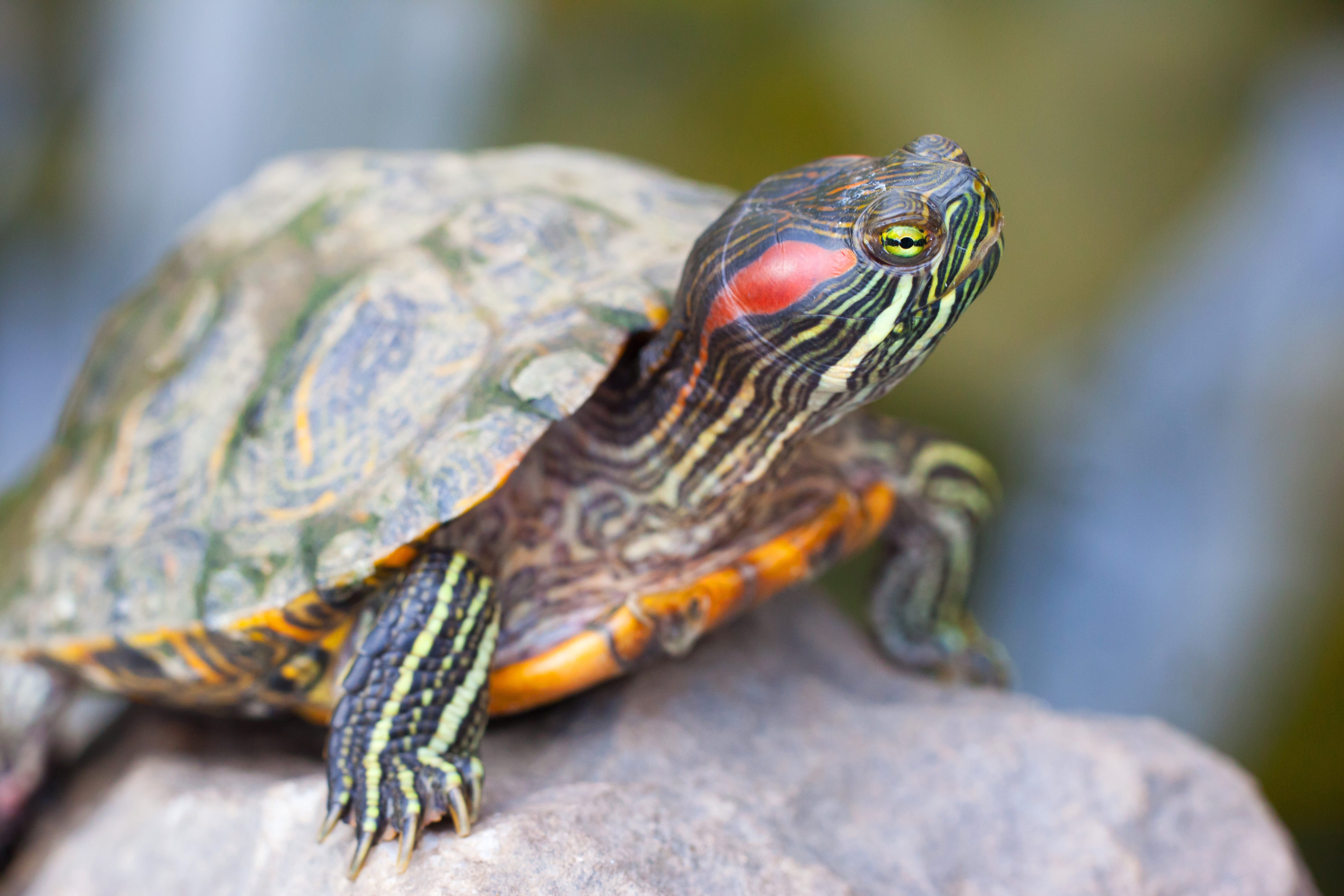Share This Article
By Sahar Adatia and Jimmy Singh.
Baby turtles. There’s just something so adorable about them.
Yes, they’re reptiles, which many people aren’t the biggest fans of.
But they’re still teeny, tiny bundles of cuteness, waddling around with their miniature shell backpacks, ready to dash off to the ocean.
And what about their sweet little faces, enough to keep you in a good mood for at least a couple of hours, if not the whole week!
If you’ve always loved baby turtles like we have, it may come as sad news to learn that these endearing creatures recently fell victim to the illegal wildlife trade.
It is reported that earlier this year, Malaysia authorities seized more than 5,000 hatchlings allegedly packed into 32 small baskets in the luggage of two male Indian nationals.
The men flew in from Guangzhou, China, and were on their way to India before getting caught.
Not all of the turtles survived the trip.
How the 5,255 Red-Eared Slider Hatchlings Were Discovered
On 20 June 2019, Malaysian custom officials arrested two Indian men who allegedly attempted to smuggle 5,255 baby turtles at the Kuala Lumpur airport.
The men, aged 30 and 42, flew in on AirAsia, and had no permits for the turtles. They told investigators that the terrapins were meant to be sold as pets in India.
Senior customs official, Zulkurnain Mohamed Yusof, said the creatures were discovered stored in over 30 small boxes and stashed in their suitcases.
The turtles were valued at around $US12,700, and, expectedly, not all of them survived the trip.
Those that did survive were put under the care of wildlife officials.
Malaysia is a major transit point for wildlife smugglers, who typically go on to trade in other Asian countries.
Why the Red-Eared Slider is Amongst the World’s Most Commonly Traded Turtle
In case you haven’t seen a baby red-eared slider turtle before, they’re pretty adorable creatures.
They have a distinctive, broad red or orange stripe behind each eye, while narrow yellow stripes mark the rest of the turtle’s head and legs.
Its carapace is dark green with yellow markings.
Male red-eared slider turtles are usually smaller than females, and have very long claws on the front feet.
According to the International Union for the Conservation of Nature, red-eared sliders are the most popular turtle in the pet trade, and if not sold as pets, they are usually sold for their meat.
They are common pets and are classified as an invasive species in a number of habitats.
They are generally found in the wild in numerous countries around the world as a result of many being released by owners or escaping.
Permits are required to possess red-eared slider turtles because in their infancy they are susceptible to carrying salmonella and pose health concerns.
In Australia, the species is considered a threat to the native turtle population.
The Law Around Illegal Wildlife Trade in Australia
If you’ve ever watched an episode of Border Security, you’ll likely recall the strange and astonishing items people have nonchalantly attempted to smuggle through Australia and various airports around the world.
From drugs hidden in meat machines to tropical fruits, herbal remedies and even a rare species of Arowana fish, people try every trick in the book believing they can outwit customs officers and traffic forbidden items into the country.
When it comes to smuggling animals, what you may not realise is that other than being illegal, wildlife trade is also considered an act of cruelty to the animal. This is because smuggling the creature and keeping it out of its natural environment means it is most likely unable to survive the trip.
As a result, the import and export of animals is a heavily controlled area with severe penalties. Those who disobey the law can face time in jail and huge fines.
Have a question to ask? Call our specialist criminal lawyers located in Sydney and Parramatta who are leaders in criminal law.
The Penalties You Can Face for Illegal Wildlife Trade in Australia
Under Australian law, a person will be guilty of the offence of wildlife trade if he or she imports a specimen, and if that specimen is a regulated live specimen.
As per section 303EB of the Environment Protection and Biodiversity Conservation Act 1999, a “regulated live specimen” includes a live animal or plant which does not fall within the list reflected in section 303EB.
Under section 303EK of the Environment Protection and Biodiversity Conservation Act 1999 (NSW), the maximum penalty for wildlife trade offences is 10 years in jail and/or a fine of up to $210,000.
It should be noted that there are exemptions to this, which include the following circumstances:
- If the specimen is documented in Part 2 of the list referred to in section 303EB where such a specimen has been imported in compliance with a permit that has been issued under s303CG, 303EN or 303GC; or
- If the specimen has been imported in compliance with a permit that’s been issued under s303GD.
If going to court, here is a guide on what to expect when appearing in court for a criminal charge.
Book a Lawyer Online
Make a booking to arrange a free consult today.
Call For Free Consultation
Call Now to Speak To a Criminal Defence Lawyer
Over 40 Years Combined Experience
Proven SuccessAustralia-Wide
Experienced LawyerGuarantee
 (02) 8606 2218
(02) 8606 2218
 (02) 8606 2218
(02) 8606 2218














